Céline Dion’s documentary, I Am: Celine Dion, has been finally released, offering a rare and candid look into her daily struggles. In one particularly vulnerable moment, Dion shares her experience of suffering a terrifying seizure that lasted several minutes.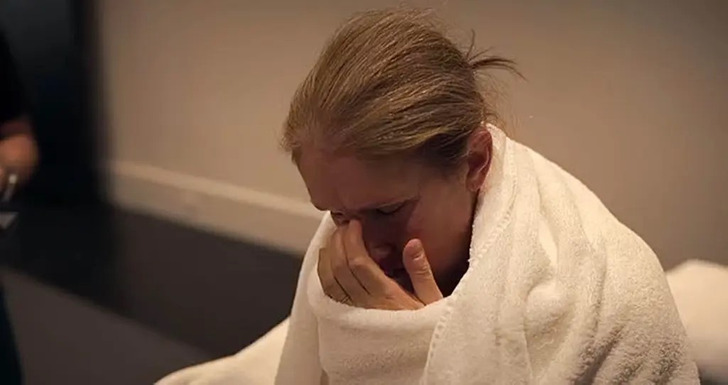
© I Am: Celine Dion / Sony Music and co-producers
The documentary captures a tense moment as Céline Dion undergoes a medical evaluation. The Grammy-winning artist has been struggling with spasms linked to stiff person syndrome, a rare and progressive neurological disorder.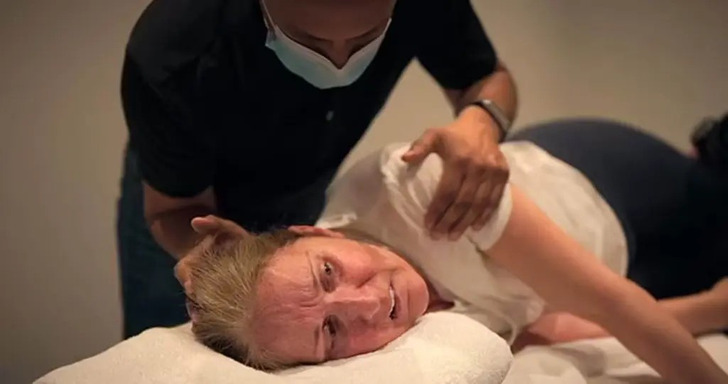
© I Am: Celine Dion / Sony Music and co-producers
Lying down on a massage table, 56-year-old Dion experiences spasms. Her doctor, Lobo, cautions that these spasms could “lead to a crisis.”
Soon after, the icon begins to experience a severe seizure. Her doctor swiftly calls for another medical team member to give her a medication used to treat nervous system disorders.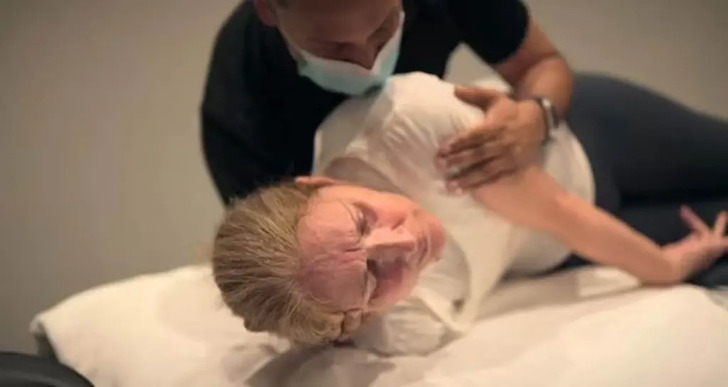
© I Am: Celine Dion / Sony Music and co-producers
At that moment, Dion can be heard groaning in pain as she shakes uncontrollably while lying face down. In a startling moment, Dion appears wide-eyed and unable to move independently.
Despite her condition, she remains conscious and manages to signal her awareness by weakly squeezing one of the medical expert’s hands.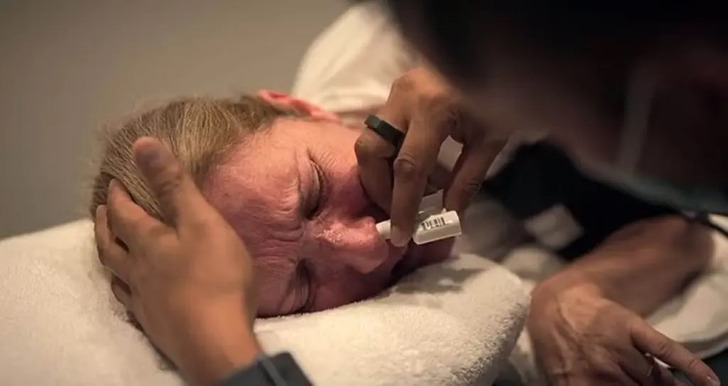
© I Am: Celine Dion / Sony Music and co-producers
Following the administration of two doses of a nasal spray, Dion starts to recover from the seizure. The doctor mentions that if she hadn’t responded, they would have needed to rush her to the hospital.
As the My Heart Will Go On singer seems to regain her composure, she confesses to everyone in the room that experiences like these leave her feeling “so embarrassed.”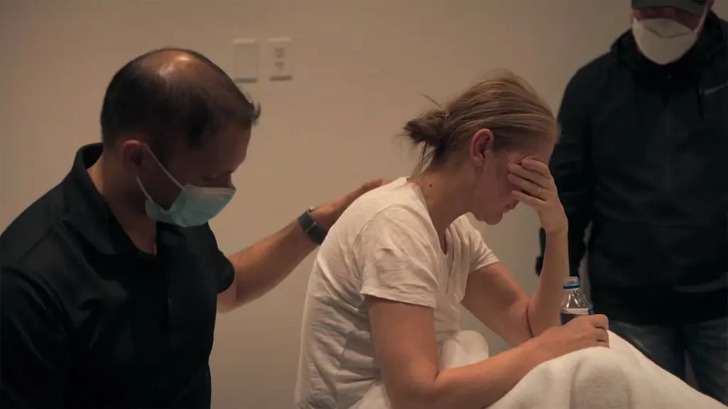
© I Am: Celine Dion / Sony Music and co-producers
Describing her horrible experience, the singer says, “I don’t know how to express it, like, it’s just … you know, like, to not have control of yourself?” Her doctor, Lobo, explains that the likely trigger for the seizure was Dion’s recent session in the studio where she had been singing, which overstimulated her brain.
Dion replied, “Well, what am I gonna do? If I can’t get stimulated by what I love, and then I’m gonna go onstage and, like, you’re gonna put the pulse oximeter on me, and you’re gonna turn me on my back?”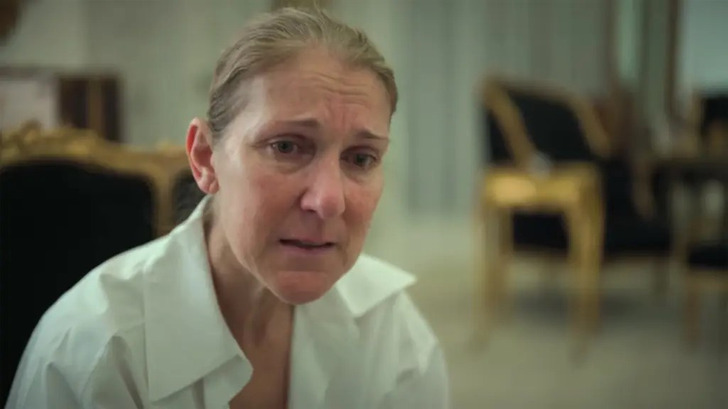
© I Am: Celine Dion / Sony Music and co-producers
Céline revealed her stiff person syndrome diagnosis back in December 2022. The star had to cancel tour dates in Europe, postpone her Las Vegas residency scheduled for October 2021, and later cancel her North American tour.
We admire Céline Dion’s determination and strength in the face of the formidable challenges she has encountered. Her life has been a journey fraught with difficulties from a young age, and here are seven major struggles that have shaped her into the inspirational icon she is today.
Preview photo credit I Am: Celine Dion / Sony Music and co-producers
There’s One Method of Healing Trauma That Prince Harry Uses, and Here’s How to Practice It
Prince Harry recently opened up about his journey with post-traumatic stress disorder following the loss of his mother, Princess Diana. In a candid discussion, he revealed his exploration of a groundbreaking therapy that helped him.
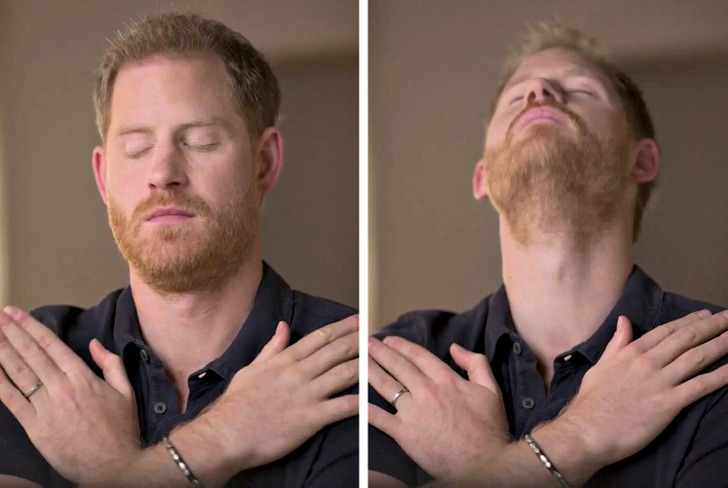
The therapy is called eye movement desensitization and reprocessing (EMDR) to address the debilitating effects of his anxiety attacks. This revelation offers a glimpse into the royal’s personal struggles and his proactive approach towards mental health care, shedding light on the significance of seeking innovative treatments of traumas.
In a video, Prince Harry can be seen undergoing EMDR therapy, where he taps his shoulders and moves his eyes rapidly. This therapy is relatively new and is used to treat PTSD. Prince Harry shared that he decided to try EMDR to deal with severe anxiety attacks he was experiencing.
Prince Harry mentioned that he was open to trying EMDR because of the therapy and work he had done over the years.
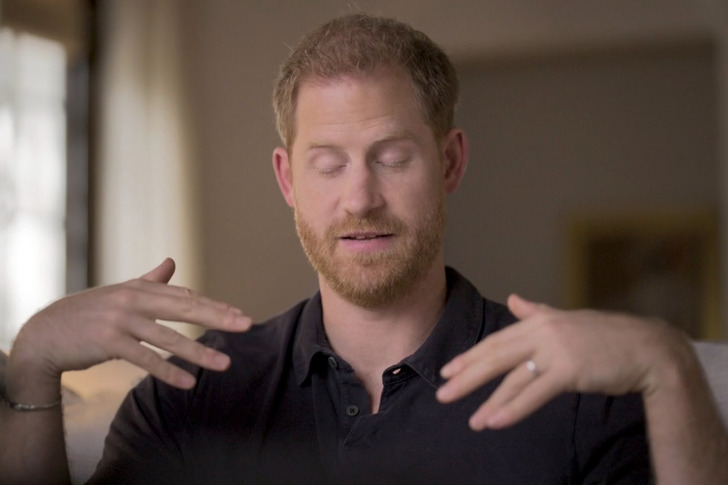
During a therapy session with UK-based psychotherapist Sanja Oakley, Prince Harry demonstrated how EMDR helped him feel better about returning home. He described feeling scared and helpless before, but the therapy helped him cope with those feelings.
Prince Harry’s openness about his experience with EMDR therapy sheds light on alternative treatments for post-traumatic disorder and mental health struggles. It shows that seeking help and trying different therapies can make a difference in managing mental health conditions.

EMDR is a therapy made in 1987 to help with emotional traumas. It’s a structured therapy where you think about a tough memory while moving your eyes back and forth. This helps lessen the strong feelings tied to the memory.
EMDR works on a theory called Adaptive Information Processing (AIP). It says that trauma sticks around because it hasn’t been dealt with properly. So, when something reminds you of the trauma, those memories can come back strongly.
Unlike other therapies that try to lessen your reaction to trauma, EMDR tries to change how your brain stores those tough memories. Sometimes, instead of eye movements, you might listen to alternating tones. Usually, EMDR happens once or twice a week for about six to 12 sessions. But it can vary depending on the person.
Benefits of EMDR therapy
- EMDR is a structured therapy and usually needs fewer sessions than ongoing therapies.
- You don’t have to keep going back to the tough memory for a long time.
- You don’t have to talk a lot about what happened to you.
- There’s no homework to do.
- EMDR doesn’t try to change your thoughts and beliefs.
Disadvantages of EMDR therapy
- While EMDR is known to help with PTSD, it hasn’t been studied as much for other mood or mental health problems.
- If you’re avoiding talking about a tough event, EMDR might not be the best choice. Other types of talk therapy might work better.
- EMDR can sometimes make you feel worse at the start of treatment. The person who created EMDR warns that this could be dangerous for people who have gone through really tough things.
The process of EMDR
EMDR is a structured process with eight phases, each aimed at helping you deal with traumatic memories:
- History taking: Discuss your past with the therapist to identify which memories to focus on.
- Preparation: Learn about EMDR and how the therapist will use bilateral stimulation.
- Assessment: Identify your negative and positive beliefs related to the trauma.
- Desensitization: Use bilateral stimulation while recalling the memory.
- Installation: Focus on positive beliefs while processing the memory.
- Body scan: Talk about how you feel emotionally and physically.
- Closure: Prepare for what may happen between sessions.
- Reevaluation: Assess your progress and decide if more sessions are needed.
As you go through EMDR, you may start feeling less overwhelmed by the trauma. It’s normal for other painful memories to surface, indicating that suppressed memories are being processed.
When grappling with deep emotional traumas, it’s crucial to seek out specialists who can provide the appropriate form of treatment tailored to your needs. Whether it’s EMDR therapy or other therapeutic approaches, finding the right professional can make a significant difference in your healing journey.
Preview photo credit Good Morning America / YouTube
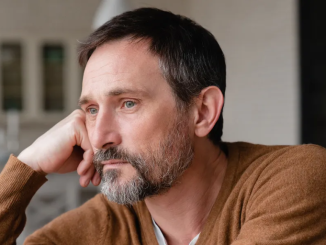


Leave a Reply